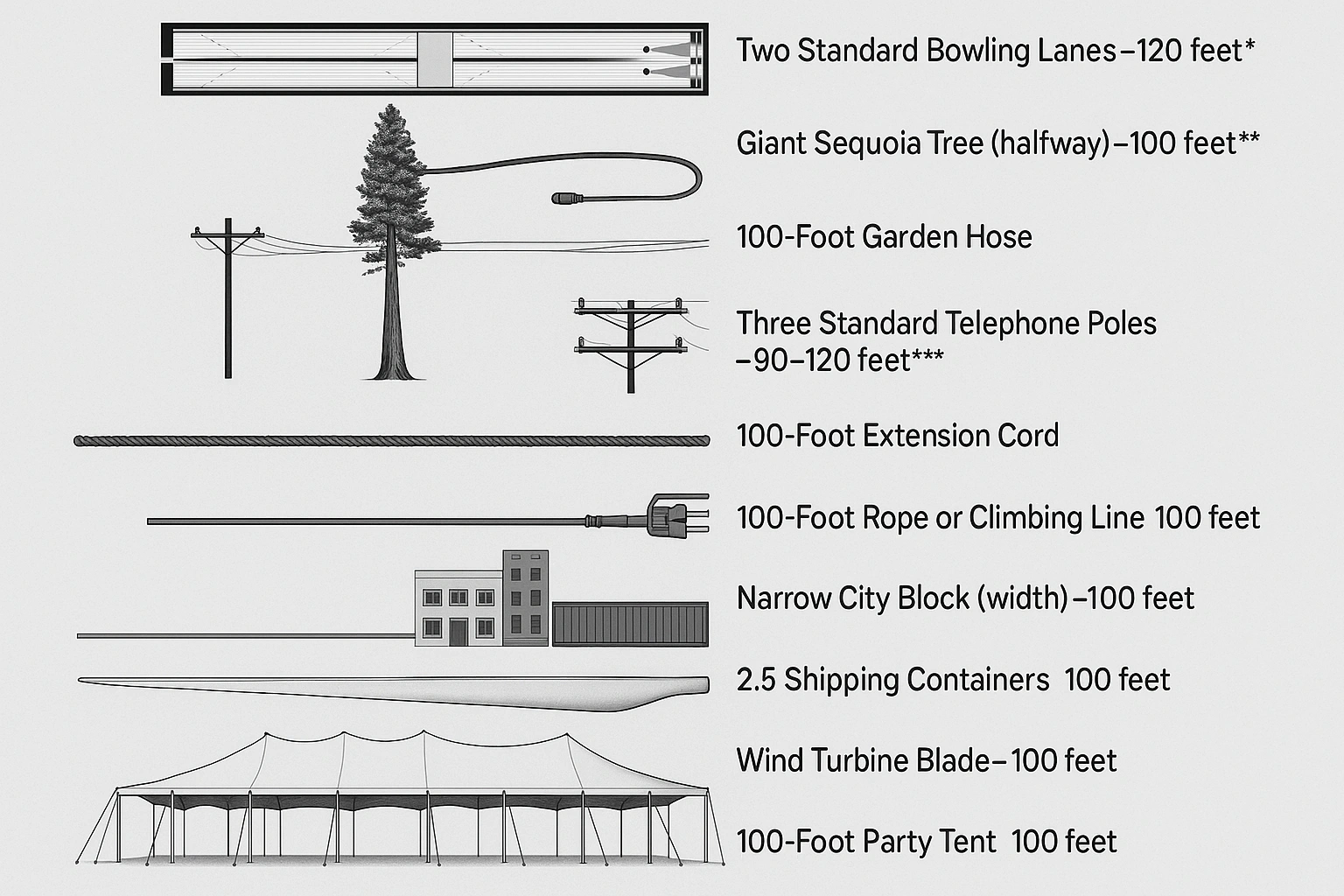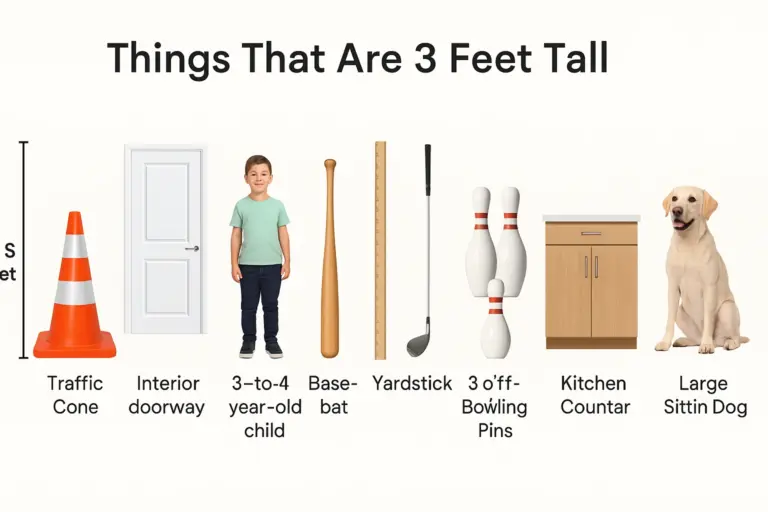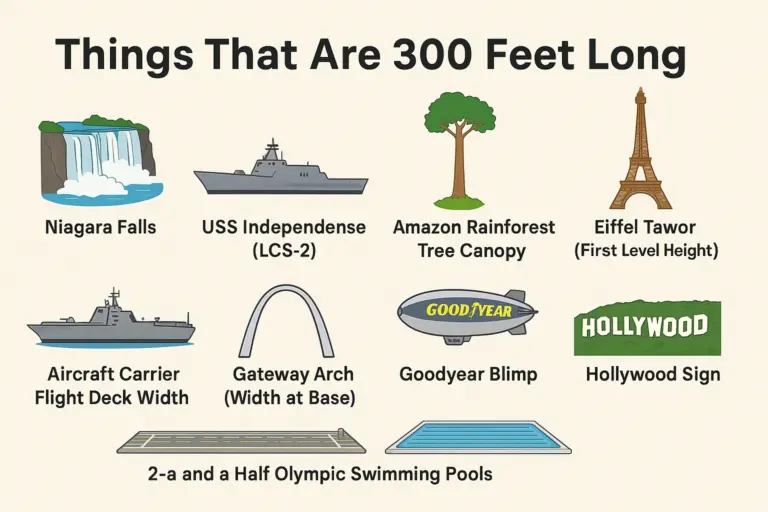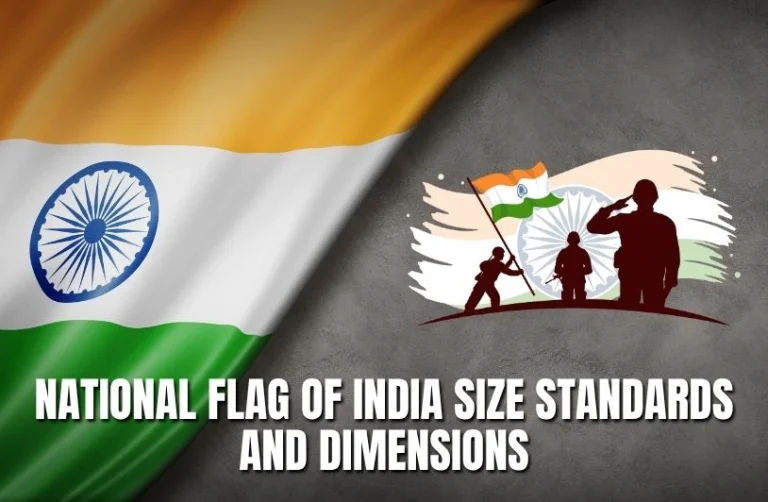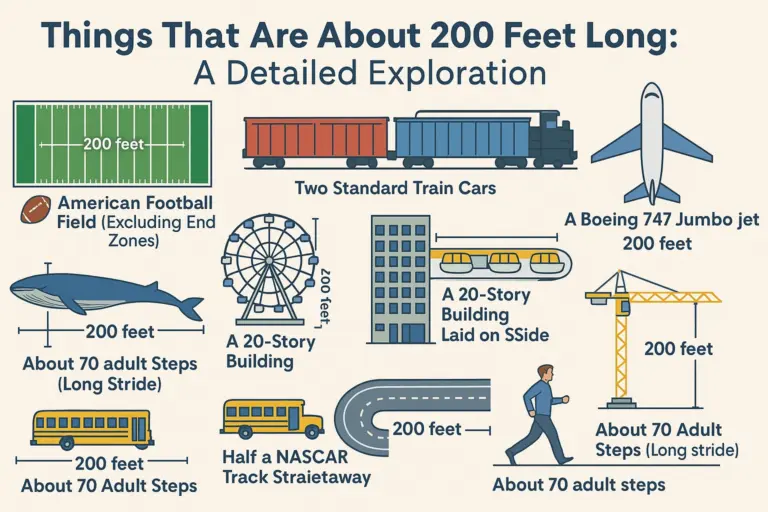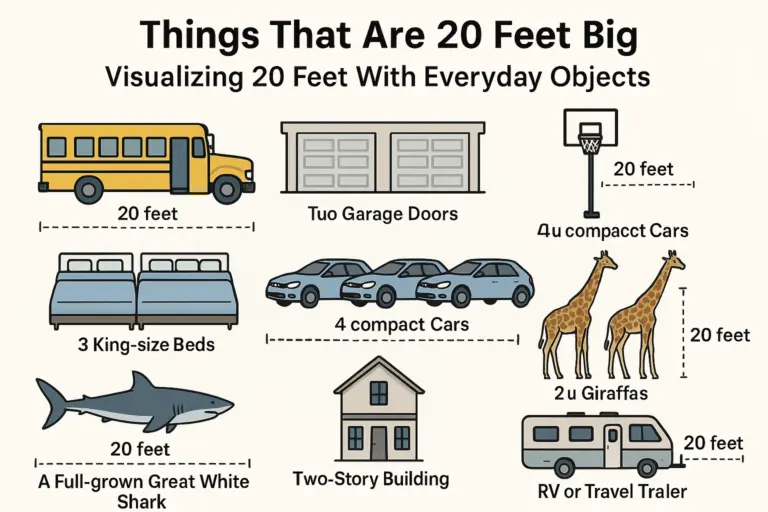Amazing 100-Foot Long Things: 10 Common Items That’ll Surprise You
Have you ever tried to picture just how long 100 feet really is? In our everyday routines, we often come across objects and structures that stretch this impressive distance, usually without even noticing.
From famous landmarks to ordinary items, countless things measure up to 100 feet in length. Let’s take a closer look at what 100 feet means, how it compares to other units, and discover 13 common things that are exactly this long.
Understanding 100 Feet
A foot, in the imperial measurement system, equals 12 inches. So, 100 feet adds up to a whopping 1,200 inches! To help you visualize, that’s about the height of a 10-story building or the combined length of 33 average-sized cars lined up bumper to bumper.
Converting 100 Feet to Other Units
While feet are commonly used in some countries, others rely on different units. In the metric system, 100 feet is approximately 30.48 meters. This conversion highlights the diversity in how various cultures and regions measure length, offering a global perspective on just how significant 100 feet is.
Measuring 100 Feet at Home
Think measuring 100 feet at home is impossible? Think again! With a standard tape measure, you can stretch out and mark off 100 feet—just take it in sections if your tape isn’t that long. Prefer a techy solution? There are plenty of smartphone apps that use your camera to measure distances with surprising accuracy. Whichever method you choose, measuring out 100 feet can be both fun and educational.
📊 100 Feet Visualization Table
| Item / Structure | Approx. Length | Description |
|---|---|---|
| Two Standard Bowling Lanes | ~120 ft. | Almost two full-length bowling lanes end-to-end (playing surface ~100 ft.) |
| Giant Sequoia Tree (halfway) | ~100 ft. | Halfway up a giant sequoia tree (trees reach 250–300 ft. tall) |
| 100-Foot Garden Hose | 100 ft. | Standard long garden hose, uncoiled |
| Three Standard Telephone Poles | ~90–120 ft. | Three poles stacked end-to-end (typically 30–40 ft each, ~100 ft. for 3) |
| 100-Foot Extension Cord | 100 ft. | Heavy-duty electrical cable, fully unrolled |
| 100-Foot Rope or Climbing Line | 100 ft. | Rope for climbing, rescue, or rigging, laid out in a straight line |
| Narrow City Block (width) | ~100 ft. | The width of a typical narrow city block in some neighborhoods |
| 2.5 Shipping Containers | 100 ft. | Two and a half standard shipping containers (each 40 ft.) |
| Wind Turbine Blade | ~100 ft. | The length of a single large wind turbine blade |
| 100-Foot Party Tent | 100 ft. | Large event tent, covers a significant outdoor area |
1. Two Standard Bowling Lanes
-
Measurement: Each bowling lane is about 60 ft. from foul line to headpin.
-
Description: Bowling lanes are long, polished stretches where players roll heavy balls toward pins.
-
Reference: Two lanes placed end-to-end would stretch about 120 ft., but if you line up two lanes slightly overlapping or account for only the playing surface, you get a sense of how much space 100 feet covers—almost the full length of two lanes!
-
Visual: Imagine walking from one end of your local bowling alley to the other—that’s close to 100 ft.

2. A Giant Sequoia Tree (Halfway Up)
-
Measurement: Giant sequoias can reach 250–300 ft. tall.
-
Description: These towering trees are among the largest living things on Earth.
-
Reference: If you look halfway up a giant sequoia, you’re seeing about 100 ft. of tree—an awe-inspiring height!
-
Visual: Picture yourself at the base of a sequoia, craning your neck upward—halfway up is where 100 ft. would be.

3. A 100-Foot Garden Hose
-
Measurement: Garden hoses are commonly sold in 50- or 100-foot lengths.
-
Description: Flexible, coiled tubes used for watering plants or washing cars.
-
Reference: Uncoiling a 100-foot hose gives you a direct, tangible sense of how long 100 ft. is—especially if you lay it out in your backyard.
-
Visual: Lay out the hose in a straight line and walk its length—that’s 100 ft.

4. Three Standard Telephone Poles
-
Measurement: Telephone poles are typically 30–40 ft. tall.
-
Description: Wooden or concrete poles that support electrical wires and transformers.
-
Reference: Three poles stacked end-to-end (or laid on the ground) would measure close to 100 ft.
-
Visual: Imagine three tall poles in a line—that’s the distance.

5. A 100-Foot Extension Cord
-
Measurement: Extension cords come in various lengths, including 100 ft.
-
Description: Heavy-duty electrical cables for powering tools or equipment far from outlets.
-
Reference: Unrolling a 100-foot cord shows you exactly how far that length extends across your yard or workspace.
-
Visual: Lay out the cord and walk its length—instant visualization.

6. A 100-Foot Rope or Climbing Line
-
Measurement: Ropes and climbing lines are often sold in 100-foot lengths.
-
Description: Thick, strong ropes used for climbing, rigging, or rescue operations.
-
Reference: Stretching out a 100-foot rope gives a clear sense of distance, especially if you’re used to handling ropes in sports or work.
-
Visual: Lay the rope in a straight line and walk its length—that’s 100 ft.
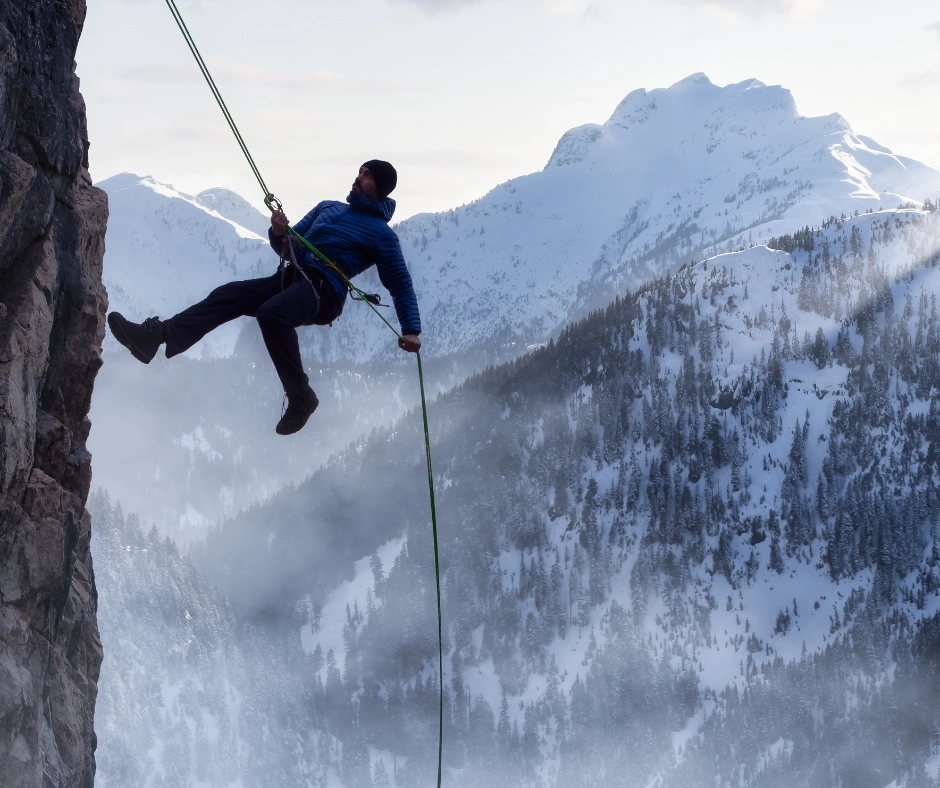
7. A 100-Foot City Block (Narrow Side)
-
Measurement: City blocks vary, but some narrow blocks are about 100 feet wide.
-
Description: The width of a typical city block in some neighborhoods.
-
Reference: Walking across the width of a narrow city block gives you a real-world sense of 100 feet.
-
Visual: Stand on one side of the block and look across to the other—that’s about 100 feet.

8. A 100-Foot Shipping Container Train (Two and a Half Containers)
-
Measurement: Standard shipping containers are 40 feet long.
-
Description: Large metal boxes used for transporting goods worldwide.
-
Reference: Two and a half containers lined up end-to-end equal 100 feet.
-
Visual: Picture two full containers and a half of another—that’s the length.

9. A 100-Foot Wind Turbine Blade
-
Measurement: Wind turbine blades can be 100 feet or longer.
-
Description: Massive, aerodynamic blades that capture wind energy.
-
Reference: The length of a single blade is about 100 feet—imagine a blade lying on the ground, reaching as far as a long runway.
-
Visual: Lay out a single blade and walk its length—that’s 100 feet.

10. A 100-Foot Party Tent
-
Measurement: Large event tents can span 100 feet in length.
-
Description: Spacious, temporary structures for weddings, festivals, or outdoor gatherings.
-
Reference: Walking the length of a 100-foot tent gives you a sense of how much space it covers.
-
Visual: Imagine setting up a tent that stretches the length of a football field’s third—that’s 100 feet.

(FAQ)
1. Why is it helpful to compare 100 feet to everyday objects?
Comparing 100 feet to familiar objects or structures makes it easier to visualize and understand large measurements. It provides a real-world reference that helps you appreciate the actual size or distance involved.
2. Can you use people to help visualize 100 feet?
Yes, you can! The average adult is about 5 to 6 feet tall. If you lined up 16 to 20 adults lying head-to-toe, they would stretch about 100 feet. This is another practical way to imagine the length.
3. Are there sports fields or courts that are exactly 100 feet long?
While most standard sports courts and fields are not exactly 100 feet long, many are close. For example, the width of a standard soccer field can be between 50 and 100 yards (150–300 feet), but the length is much longer. A basketball court is 94 feet long, which is very close to 100 feet and can be used for comparison.
Conclusion
Understanding the length of 100 feet can be challenging without a frame of reference. By comparing it to everyday objects—like garden hoses, shipping containers, or wind turbine blades—you can easily visualize and appreciate this measurement in real-world terms. Whether you’re planning a project, setting up an event, or just satisfying your curiosity, knowing how long 100 feet is can be both practical and fascinating. Use these comparisons to make large measurements more relatable and easier to understand!
Feet Converter

